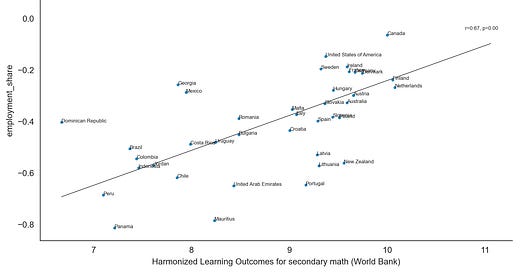The international division of labor is the great polarizer of the world. Individuals, regions, countries, and macroregions that specialize in high-skill activities are systematically richer than their counterparts who specialize in low-skill activities. So, everyone wants to climb the ladder. The big question was how? How could poor nations overcome the…
Keep reading with a 7-day free trial
Subscribe to Policy Tensor to keep reading this post and get 7 days of free access to the full post archives.


